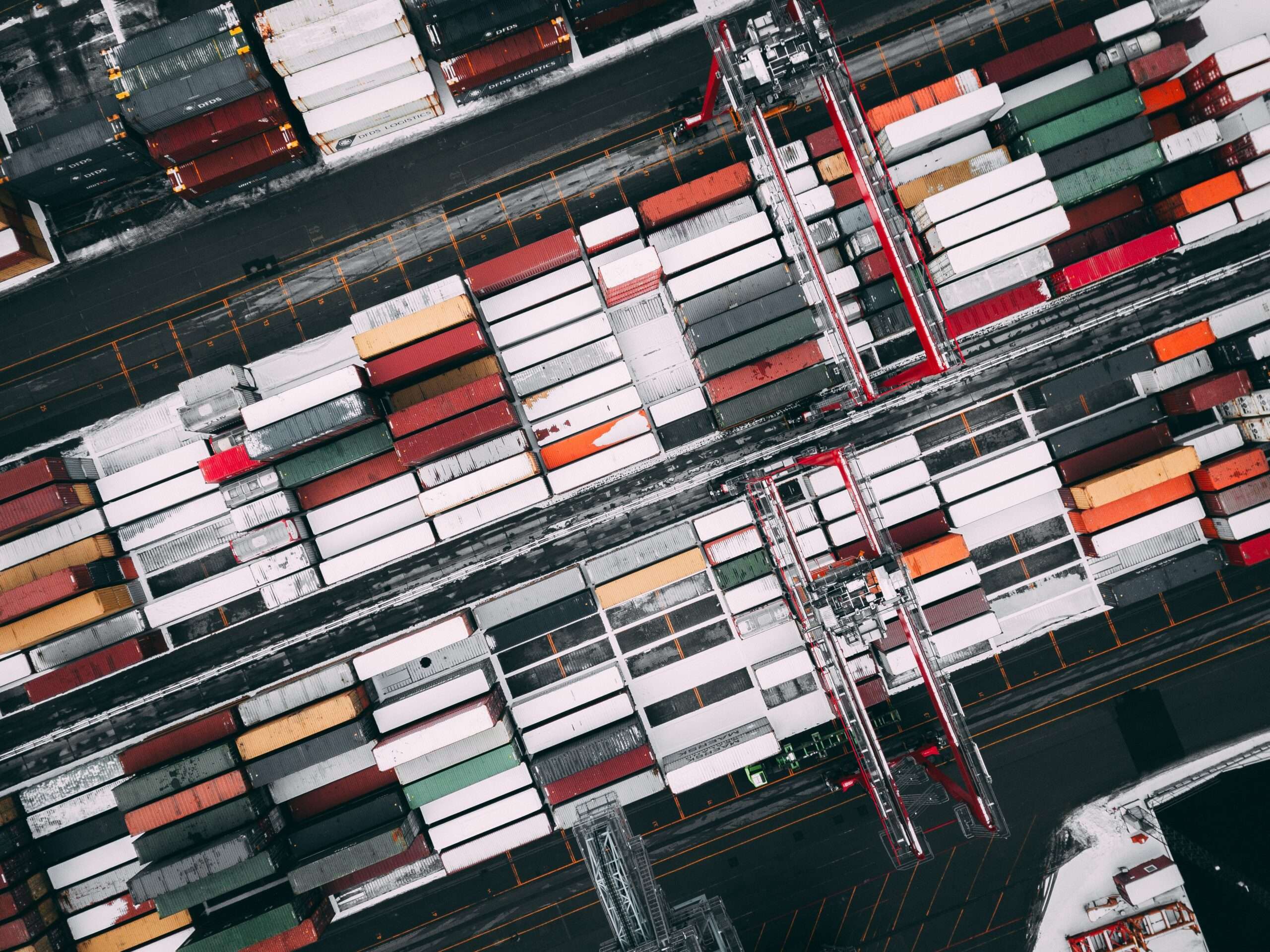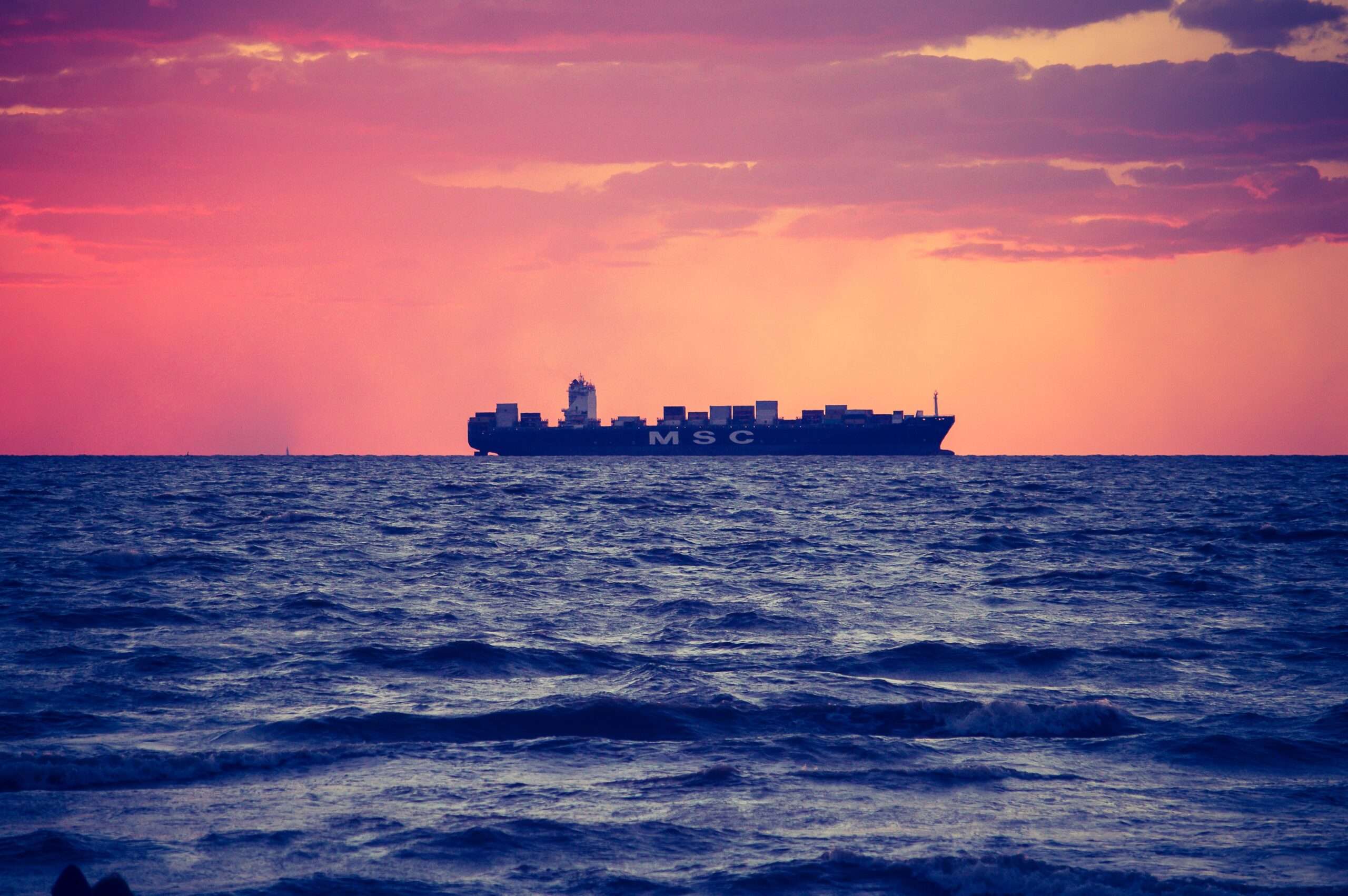The longevity of shipping containers when buried underground is a topic of great interest, especially in the realm of off-grid living. As someone fascinated by sustainable building practices, I have embarked on a quest to unravel the mysteries surrounding the lifespan of these versatile structures. In this article, I will explore the factors that contribute to the durability of shipping containers when placed in the ground, shedding light on their potential as long-lasting foundations for off-grid dwellings.
Factors Affecting the Lifespan of a Shipping Container
Quality of the Container
The quality of the shipping container itself is one of the primary factors that affect its lifespan when buried in the ground. Containers made from higher quality materials and constructed with precision tend to have a longer lifespan. Factors such as the thickness of the steel, welding quality, and structural integrity play a crucial role in determining the container’s durability.
Type of Soil
The type of soil in which a shipping container is buried can significantly impact its lifespan. Different soils have varying levels of moisture retention, drainage capabilities, and chemical compositions. Soils with high moisture content, poor drainage, or high levels of acidity can accelerate corrosion and weaken the container over time. Therefore, it is important to consider soil characteristics when choosing a burial location for a shipping container.
Drainage
Effective drainage is essential for maintaining the longevity of a buried shipping container. Poor drainage can lead to the accumulation of water around the container, increasing the risk of corrosion. By ensuring proper grading and implementing adequate drainage systems, one can help prevent water from pooling around the container and extend its lifespan.
Surface Preparation
Proper surface preparation before burying a shipping container is crucial to ensure its long-term durability. This includes removing any rust, applying protective coatings, and ensuring that the container is clean and dry. Adequate surface preparation helps to minimize the chances of corrosion and other damage caused by environmental factors.
Climate and Weather Conditions
Different climates and weather conditions can significantly impact the lifespan of a buried shipping container. Harsh weather conditions such as extreme temperatures, heavy rains, and high winds can accelerate the deterioration of the container. Containers in regions with severe weather conditions may require additional protective measures, such as insulation or reinforcement, to prolong their lifespan.
Level of Maintenance
Regular maintenance is essential for ensuring the longevity of a buried shipping container. Periodic inspections, cleaning, and repairs can help identify and address any issues before they become significant problems. Adequate maintenance practices, such as applying rust prevention coatings, can significantly extend the lifespan of a container.
Proximity to Water
The proximity of a buried shipping container to water sources can impact its lifespan. Water bodies, such as rivers, lakes, or underground water tables, can affect soil moisture levels and increase the risk of corrosion. Containers placed near water sources should be properly sealed and protected against water infiltration to prevent potential damage.
Usage Intensity
The intensity of usage or the weight placed on a shipping container can affect its lifespan. Containers that are subject to heavy loads, such as those used for storage or as structural elements in construction projects, may experience additional stress and wear. Care should be taken to avoid excessive weight or strain on the container to prevent premature failure.
Presence of Chemicals
The presence of certain chemicals in the soil or nearby surroundings can impact the lifespan of a buried shipping container. Chemicals such as acids or corrosive substances can accelerate the deterioration of the container’s materials. Conducting a thorough analysis of the soil and surrounding environment and implementing appropriate protective measures can help mitigate the effects of chemical exposure.
Container Modifications
Modifying a shipping container can also influence its lifespan when buried. Certain modifications, such as adding additional reinforcements or protective coatings, can enhance the container’s resistance to corrosion and other environmental factors. However, it is important to ensure that modifications do not compromise the overall structural integrity of the container.
Expected Lifespan of Different Shipping Container Materials
Corten Steel Containers
Corten steel containers are widely used in the shipping industry, and their robust construction makes them suitable for burial. These containers are designed to withstand harsh weather conditions and possess excellent corrosion resistance properties. When properly maintained and protected from external factors, Corten steel containers can last up to several decades in the ground.
Aluminum Containers
Aluminum containers, although lightweight, may not be as durable when buried compared to Corten steel containers. Aluminum is more prone to corrosion, especially in acidic soil conditions. Therefore, the lifespan of aluminum containers in the ground may be shorter compared to other materials, typically ranging from 10 to 20 years.
Wooden Containers
Wooden containers have been used for shipping purposes for centuries. However, when buried in the ground, the lifespan of wooden containers is relatively shorter due to the potential for rot, decay, and insect infestation. Proper treatment with wood preservatives can help prolong their lifespan, but they may still last only around 10 to 15 years before significant deterioration occurs.
Plastic Containers
Plastic containers, typically made of high-density polyethylene (HDPE) or polypropylene (PP), have a relatively long lifespan when buried. These materials are resistant to corrosion, rot, and insect damage. Plastic containers can endure in the ground for several decades, with an expected lifespan of approximately 30 to 40 years.
Fiberglass Containers
Fiberglass containers offer good resistance to corrosion and are often used for burial purposes. When properly manufactured and maintained, fiberglass containers can have a lifespan of around 20 to 30 years. However, exposure to extreme temperatures or UV radiation over time may impact their durability and require additional protective measures.

Longevity Boosting Strategies for Buried Shipping Containers
Container Modification
Modifying a shipping container to enhance its durability can significantly extend its lifespan when buried. This may include reinforcing critical areas, applying additional layers of protective coatings, or implementing structural modifications to withstand specific soil conditions. Engaging professionals with expertise in container modification can help ensure that the modifications are done effectively and do not compromise the container’s integrity.
Proper Surface Preparation
Thorough surface preparation is essential before burying a shipping container. This involves removing any existing rust or corrosion, applying rust prevention coatings, and ensuring the container is clean and dry. Adequate surface preparation helps protect the container from the elements and minimize the risk of corrosion, ultimately prolonging its lifespan.
Effective Drainage System
Implementing an effective drainage system is vital for protecting a buried shipping container from excessive moisture. This can involve grading the land properly, installing French drains or perforated pipes, and creating a sloped surface around the container to allow water to flow away. Proper drainage helps prevent water accumulation and reduces the risk of corrosion and other moisture-related issues.
Ventilation and Moisture Control
Proper ventilation and moisture control are crucial for maintaining the longevity of a buried shipping container. Adequate airflow prevents the buildup of moisture and reduces the chances of condensation, which can contribute to corrosion and other forms of damage. Installing vents or fans and using moisture-absorbing materials can help regulate the internal environment and protect the container against excessive moisture.
Rust Prevention Measures
Implementing effective rust prevention measures is essential for prolonging the lifespan of a buried shipping container. Applying rust-resistant coatings, such as epoxy or zinc-based paints, can provide an additional layer of protection against corrosion. Regular inspections should also be conducted to identify any signs of rust or damage and take appropriate actions to address the issues promptly.
Regular Inspections and Maintenance
Regular inspections and maintenance are critical for identifying and addressing any issues that may compromise the lifespan of a buried shipping container. This includes checking for signs of rust, leaks, or structural damage, as well as ensuring that protective coatings are intact. Regular maintenance practices, such as cleaning, repainting, and repairing any damages, should be carried out to extend the container’s lifespan.
Proper Waterproofing
Proper waterproofing is essential to protect a buried shipping container from water infiltration and subsequent damage. This may involve sealing joints and seams with waterproofing materials, applying waterproof coatings to the container’s exterior, and ensuring that the container is adequately sealed against moisture. Effective waterproofing measures help prevent corrosion and maintain the container’s structural integrity.
Avoidance of Chemical Contamination
To ensure the longevity of a buried shipping container, it is essential to avoid chemical contamination. Chemicals, such as fertilizers, pesticides, or industrial waste, can accelerate corrosion and cause significant damage to the container’s materials. Proper analysis of the soil and the surrounding environment, as well as implementing protective measures, can help mitigate the risk of chemical contamination.
Avoidance of Excessive Weight on the Container
Applying excessive weight or load on a buried shipping container can lead to structural damage or even failure over time. It is important to consider the weight-bearing capacity of the container and ensure that it is not exceeded. Proper distribution of weight and avoiding concentrated loads can help prevent premature deterioration and extend the container’s lifespan.
Elevated Placement of the Container
Placing a shipping container on an elevated platform or foundation can help protect it from moisture and potential damage. Elevating the container off the ground using concrete blocks, metal stands, or other suitable materials can prevent direct contact with the soil and reduce the risk of corrosion. This method also improves airflow around the container, further aiding in moisture control.
Comparing the Lifespan of Buried Shipping Containers to Above-Ground Containers
Advantages of Buried Containers
- Enhanced Durability: Buried containers, when properly maintained and protected, can have a longer lifespan compared to above-ground containers.
- Protection from Environmental Factors: Underground placement provides natural insulation against extreme temperatures, UV radiation, and severe weather conditions, minimizing the impact on the container’s materials.
- Improved Security: Buried containers offer increased security and protection against theft, vandalism, and potential damage caused by external factors.
- Efficient Use of Space: Utilizing buried containers can maximize land usage and provide additional surface area for various purposes.
Disadvantages of Buried Containers
- Higher Initial Investment: Preparing the burial site and implementing necessary modifications and protective measures may require a significant upfront investment compared to above-ground containers.
- Limited Accessibility: Buried containers may have limited access for maintenance, inspections, and retrieval of stored items, requiring careful planning for long-term usage.
- Potential for Water Damage: Despite proper drainage and waterproofing measures, there is still a risk of water intrusion, which can impact the container and its contents.
- Regulatory Considerations: Depending on local regulations and building codes, burying containers may require permits, inspections, and compliance with specific guidelines.
Advantages of Above-Ground Containers
- Ease of Accessibility: Above-ground containers provide convenient access for maintenance, inspections, and retrieval of stored items.
- Flexibility and Portability: Above-ground containers can be easily transported and relocated to different sites, facilitating adaptability for changing needs.
- Lower Initial Cost: Above-ground containers typically require fewer modifications and preparations, resulting in a lower initial investment compared to burying containers.
- Minimal Regulatory Restrictions: Unlike buried containers, above-ground containers may have fewer regulatory restrictions, making them more accessible for various applications.
Disadvantages of Above-Ground Containers
- Increased Exposure to Environmental Factors: Above-ground containers are more susceptible to weather conditions, UV radiation, and potential damage from external factors, which can impact their lifespan.
- Space Limitations: Above-ground containers occupy surface space, potentially reducing the available land area for other purposes.
- Security Concerns: Above-ground containers may be more vulnerable to theft, vandalism, and unauthorized access.
- Insulation Challenges: Maintaining suitable temperature and humidity levels within above-ground containers may require additional insulation and climate control systems.

Real-Life Examples of Buried Shipping Container Lifespans
Case Study 1: Sustainable Underground Homes
In the construction of sustainable underground homes, shipping containers are commonly used for their structural integrity and insulating properties. With proper modifications and maintenance, these buried containers can have a lifespan of 50 years or more. For example, the Earthcube project in Switzerland utilized buried shipping containers as the primary structural elements, showcasing their longevity and durability in an underground environment.
Case Study 2: Underground Storage Bunkers
Underground storage bunkers, whether for personal or commercial use, often employ shipping containers for secure and long-term storage solutions. With the implementation of proper modifications and maintenance procedures, buried containers in these applications can last for several decades. The Vivos Group, a provider of underground survival shelters, utilizes shipping containers as modular storage units with an expected lifespan of up to 100 years.
Case Study 3: Container-Related Businesses
Container-related businesses, such as underground wine cellars or storage facilities, extensively utilize buried shipping containers. With careful consideration of the factors affecting the lifespan and proper maintenance practices, these buried containers can serve their intended purposes for 20 to 50 years or longer. Examples of successful container-based businesses include the Underground Wine Cellar in Texas, which uses buried shipping containers to create a temperature-controlled wine storage facility.
Conclusion
The lifespan of a shipping container when buried in the ground is influenced by various factors, including the container’s quality, soil type, drainage, surface preparation, climate, maintenance, and proximity to water. Different container materials, such as Corten steel, aluminum, wood, plastic, and fiberglass, have varying expected lifespans underground. Implementing longevity-boosting strategies, such as container modifications, proper surface preparation, effective drainage systems, ventilation, rust prevention measures, regular inspections, and avoidance of chemical contamination, can significantly extend the lifespan of buried shipping containers.
While comparing the lifespans of buried containers to above-ground containers, it is clear that buried containers offer enhanced durability, protection from environmental factors, improved security, and efficient space utilization. However, they also come with higher initial investment, limited accessibility, potential water damage risks, and regulatory considerations. On the other hand, above-ground containers provide ease of access, flexibility, lower initial costs, fewer regulatory restrictions, but are more exposed to environmental factors, have space limitations, security concerns, and potential insulation challenges.
Real-life examples, such as sustainable underground homes, underground storage bunkers, and container-related businesses, demonstrate the practical applications and lifespan potential of buried shipping containers. With proper modifications and maintenance, these containers can be utilized for various purposes, showcasing lifespans ranging from several decades to over 100 years.
In conclusion, understanding the factors affecting the lifespan of buried shipping containers, the expected lifespans of different materials, implementing longevity-boosting strategies, comparing buried containers to above-ground containers, and examining real-life examples provide valuable insights into maximizing the lifespan and potential of shipping containers in buried applications.




